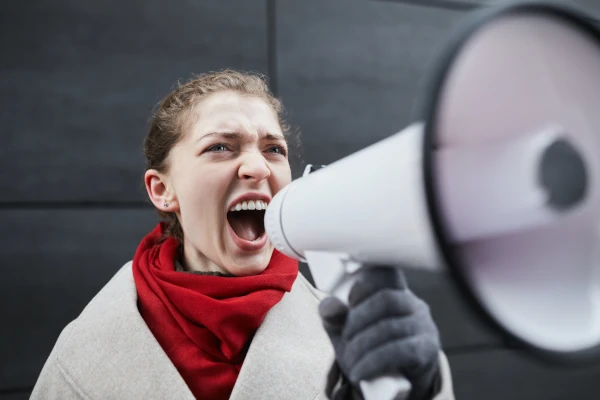Polite English: 3 Common Mistakes When Saying Please –
Everyone recognizes the importance of being polite, whether it’s in your first or second language. This is the reason that two of the first English expressions people learn are “please” and “thank you.” In English, saying please is so closely connected with politeness that it has earned the nickname “the magic word.”
This all may sound simple, but often it’s not. As others have also noticed, using ‘please’ correctly can be quite challenging these days. In fact, it is possible that your use of this ‘polite’ word can have the opposite effect: in some situations, it is actually rude to say please!
Language is always changing, as words and phrases take on new meanings based on how people use them. The verb ‘please’ first entered the English language sometime around the year 1300 as a shortened version of the French phrase s’il vous plait, which means “if it please you.” And while please continued to express politeness in English for hundreds of years, nowadays it is much more challenging to use for this purpose.
Read on to discover 3 mistakes that Language Learners make when saying please in English:

Photo by Edmond Dantes
Mistake #1: Starting a Sentence with ‘Please’
At some point in their language learning, most people are taught that it’s polite to start requests with the word ‘please.’ For example, you might learn to say “Please give me the pencil” or “Please turn left at the corner.”
While these expressions work well in the classroom, they can actually have a negative effect in the real world!
This is because in the modern U.S., ‘please’ at the start of a sentence often sounds very direct and forceful. Using please at the start of a sentence is a signal that the speaker is either giving a command or is unhappy about something (or maybe both!). For example:
- “Please stop doing that.” (unhappy request)
- “Please tell him to call me.” (command or unhappy request)
- “Please finish the work by 2 pm.” (strong command)
Notice in the sentences above that it’s not just the ‘please;’ it is please followed by an imperative verb: “please stop,” “please tell,” “please finish.” Originally, ‘please’ was used to soften these imperative sentences, but nowadays it has the surprising effect of making them even stronger and more direct than before.
So, how can these sentences be made more polite? Sometimes, it’s enough to simply move the ‘please’ to the end. With our first two examples, this helps give a softer feel:
- “Stop doing that, please.” (unhappy but polite)
- “Tell him to call me, please.” (neutral)
However, our command example sounds just as strong as before:
- “Finish the work by 2 pm, please.” (strong command)
If we really want to shift towards being more polite, we need to also change our original verb choice to something more indirect:
- STRONG: “Please stop doing that.”
SOFTER: “Let’s stop doing do that.”
- STRONG: “Please tell him to call me.”
SOFTER: “Have him give me a call.”
- STRONG: “Please finish this work by 2 pm.”
SOFTER: “I really need this work finished by 2 pm.”
Notice that none of these more polite sentences used the word ‘please’!

Photo by Annie Spratt
Mistake #2: Ending a Question with ‘Please’
Another mistake English Language Learners make with the modern usage of ‘please’ is adding it to the end of questions. Like with the first situation, the following requests were once perfectly respectful and polite English, but now can feel somewhat too forceful:
- To your host: “Could I have some coffee, please?”
- To your coworker: “Do you mind helping me, please?”
- To your neighbor: “Could I borrow your snow shovel, please?”
While these questions aren’t in danger of being rude, they do not communicate polite appreciation in the way that they once did.
For example, saying “Could I have some coffee, please?” may indicate that you don’t believe your hosts are already thinking of your needs and therefore require a gentle push toward action. Similarly, the second and third examples rush so quickly to the word ‘please’ that they don’t allow space for friendly interaction with the coworker or neighbor.
One way to make these requests more polite is to replace the questions with open-ended statements:
- “I’d love some coffee if you have it!”
- “I was wondering if you could help me.”
- “I was hoping I could borrow your snow shovel.”
These new sentences sound very American, no doubt. Each of them clearly demonstrates the American preference for informal conversation between two people who are equals. Of course, it is possible to become too casual, and any of the above statements should certainly be followed with a heart-felt, “Thanks so much!’ if the request is granted. In fact, in many ways ‘thanks’ has become the new ‘please’ as a way to express politeness after a request is granted:
- “Could I have some coffee? […] Thanks so much!”
- “Do you mind helping me? […] Thanks, I really appreciate it!”
- “Could I borrow your snow shovel? […] Thanks, you’re a lifesaver!”
It should also be noted that at formal meals, ‘Could I please have…’ is a stock expression that remains polite and proper:
- “Could I please have some more coffee?”

Photo by Tim Douglas
Mistake #3: Never Using ‘Please’ at All
For all this talk about the dangers of saying please in English, you may think it’s best to avoid this word completely. This would also be a mistake: please is still an important word, even if it has lost a little of its magic.
The secret is to use please sparingly. One of the best ways in modern conversation is adding please as a one-word interjection that takes the place of ‘Yes’:
- A: “Would you like some dessert?”
B: “Please! It looks delicious.”
- A: “Could you use some help?”
B: “Please! That would be great!”
On occasion, please can also follow a statement to add emotional weight:
- “I could really use your help. Please.”
- “Let’s try it one more time. Please.”
Possibly the reason please is still effective in these examples is because it doesn’t follow the traditional usage within a sentence. When given as a one-word interjection together with a warm smile, please may still hold some of the heart-felt appreciation that originally made it the magic word.
Thanks for taking a look at this guide to polite English!
For specific etiquette and ways to express politeness in English for the workplace, take a look at
Business Etiquette Made Easy: The Essential Guide to Professional Success by Myka Meier (available here on Amazon)
Also, be sure to check out my article on How to Make an Apology That Builds Trust
Note: As an Amazon Associate, I earn from qualifying purchases, at no additional cost to you. Recommended resources are carefully selected and help support the operation of my blog.



0 Comments